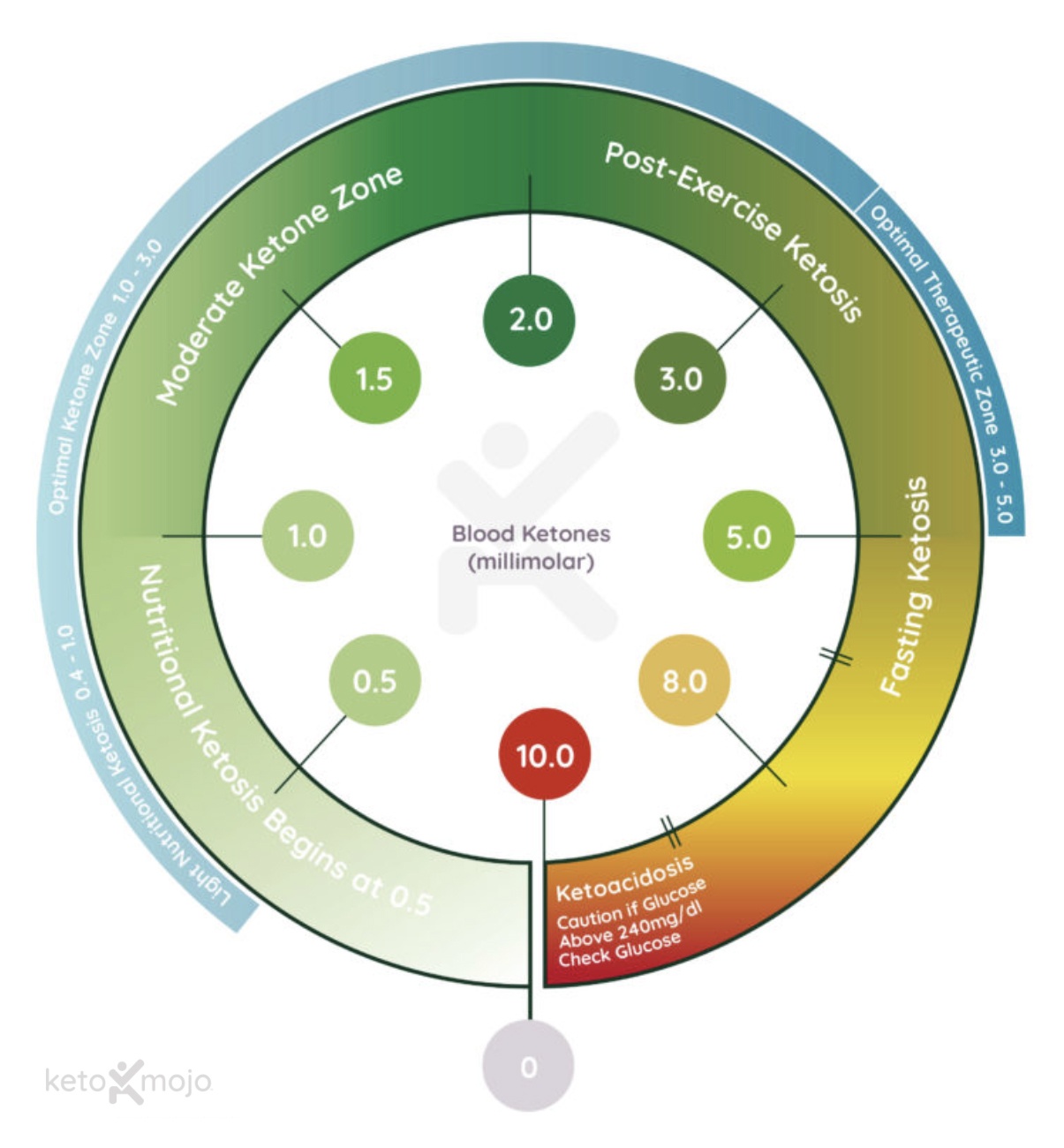When starting a keto diet, pretty much everyone gets focused on their ketone levels. It makes sense. They are concrete measurements of progress and most of us are goal-oriented. But we can’t tell you how many people we’ve spoken to who wanted to give up because they weren’t where they thought they “should be” early on. So, let’s not get ahead of ourselves. Instead, let’s explore ketone levels for ketosis with an eye on learning what they are and what they mean, so you can understand what optimal levels are based on your goals. But first, a brief PSA: the following information is not meant to be substituted for medical advice, nor does it apply if you have type 1 diabetes. If you have type 1 diabetes or other serious medical conditions, you should work with your healthcare provider to determine your goals and ideal diet.
Understanding Ketone Levels
So what level of ketones indicates ketosis? When discussing ketone levels/levels of ketosis, keto experts often cite The Art and Science of Low Carbohydrate Living and The Art and Science of Low Carbohydrate Performance, by Stephen Phinney, MD, PhD and Jeff Volek, PhD, RD. They suggest nutritional ketosis begins at molecular concentration levels of 0.5 mmol/L. That means that the minute you cross that 0.5 threshold, you’re “in ketosis.” From there, nutritional ketosis is considered “light” through 1.0 mmol/L (light is still good!), then becomes “optimal” in the 1.0 mmol/L through 3.0 mmol/L range. But if you look at the graph below, there is nuance within these ketone zones.
So, how do you know what ketone level to aim for? It depends upon your goals. The optimal ketone level will be different if your goal is to lose weight than it is if you want to prevent illness, improve mental clarity, or become more physically fit. That’s why it’s helpful to reference a ketone levels chart. View our Ketone Zone Chart below.
What Should Your Ketone Level Be?
If your primary goal for integrating the ketogenic diet into your life is weight loss, achieving “light nutritional ketosis,” or 0.5 mmol/L-1.0 mmol/L, is a good starting point. From there, aim for “optimal ketosis,” which is when your ketone levels are between 1.0 mmol/L-3.0 mmol/L. People looking to use the ketogenic diet for therapeutic benefits for medical conditions such as epilepsy, cancer, or endocrine and metabolic disorders, are generally directed to aim for much higher ketone levels—specifically in the 3.0 mmol/L -5.0 mmol/L range, or somewhere between. Those who are fasting or eat a much higher fat-to-protein ratio will look to levels in the 3.0 mmol/L-8.0 mmol/L range. But you don’t need to go there. The optimal ketosis range is called “optimal” for a reason, and it’s exactly where you’ll want to be for weight-loss and general health purposes, and you’ll eventually get there if you practice patience and get in the groove of eating a keto diet.
Ketones and Exercise
Does exercise affect ketone levels? Yes, but the effects differ from one person to the next. Still, generally speaking, anaerobic exercise (usually short duration and high intensity, like heavy weight training, sprinting, or jumping) will decrease circulating ketones, cause blood glucose to go up slightly, and cause ketones to temporarily go down. With aerobic exercises, such as swimming, walking, jogging, and cycling, you’ll generally notice an increase in circulating ketones. Does this mean you do not want to do anaerobic exercise while on a ketogenic diet? Absolutely not! Watching your ketone levels will help you understand how your body responds to various foods and activities, and knowing how your body responds will help you adjust your nutrition and food choices to properly fuel your body and maintain optimal ketone levels.
A Word of Warning
No matter the goal, no one should aim for the orange or red zones; they’re nearly impossible to achieve anyway and don’t increase the diet’s benefits. The only people who should be concerned about approaching them are type 1 diabetics because they face the potential of producing a diabetic complication called ketoacidosis, a serious condition that requires urgent medical attention. For them, the reward may not be worth the risk, which is why we recommend people with type 1 diabetes develop a diet plan with their care provider. In fact, anyone exploring the keto diet should discuss the best strategy with their medical provider, as there may be risks connected to other pre-existing medical conditions, such as kidney stones, hypercholesterolemia, or a family history of heart attack or stroke under the age of 60 years.
Your level of ketosis is not meant to be yet another thing in your life to stress over. Instead, consider it a tool to help you evaluate and adjust your eating habits as you follow your keto journey. Keep refining your choices as you go and you’ll reach your optimal levels, enjoy an invigorating and healthful way of life, and even easily slide into those too-tight jeans you’ve been eyeing in the back of the closet.
Tracking Your Ketones
Keto-Mojo makes it super easy to track and monitor your ketones, view trends and graphs, and even share readings with your healthcare provider. All you have to do is download the free app and sign up for a MyMojoHealth account on the app. You’ll be able to store an unlimited number of readings, review your readings on multiple devices, view readings in multiple graphs, order supplies right from the app, and even connect your readings to other popular health apps. Learn more here.




